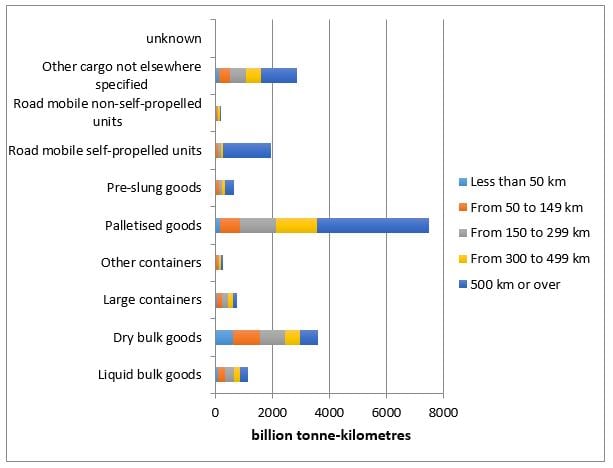Market drivers and use cases; why is it crucial to increasing efficiency for freight transport
The improvement of efficiency is one important driver of European freight transport market. Freight transport has to fulfil the requirements of the shipper that are defined by lead and transport time, weight and volume of the shipment and further specific costumer and good related characteristics. New vehicle concepts should address good classes with high transport volumes (e.g. food products, beverages and tobacco, agricultural products) in combination with long transport distances. The potential revenues in logistics segments and there expectation of growth also considered. These segments has to be addressed, because the balance between market size, expected revenues and small order sizes expect a high demand for advanced vehicle concepts using modular loading units.
It is recommended to realize an optimum trade-off between payloads and transport volumes in order to maximize the use of the loading capacities on one hand and the total amount of vehicle kilometres on European motorways on the other.
Characterisation of transported cargo in EU-28 in 2016 (source own picture based on EUROSTAT)
Fast and frequent road transport between hubs and industrial sites become important
Due to the increasing amount of courier/parcel/express cargo and general cargo, hub and spoke concepts are increasingly used to consolidate the shipments. Therefore, a promising and growing logistics segment for new truck concepts can be identified in full truck load transports between hubs (e.g. terminals, ports, huge warehouses) as well as between industrial sites and hubs. Here, it is essential that loading units can be optimally manoeuvred and placed at the gateways in cross-docking stations or in warehouses for loading and unloading, even if there is a limited infrastructure conditions. Further, a smart and seamless organisation of a fast exchange of loading units between different vehicles or between transport modes is important.







